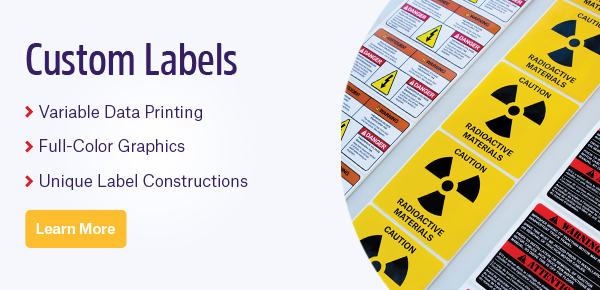 The recent surge in COVID-19 omicron variant cases represents one of the biggest challenges to the worldwide supply chain. The massive uptick in worldwide cases, driven mainly by this variant, indicates that it’s much more transmissible than previous variants, which means that many more people will likely be infected than ever before. This has led to a greater number of people entering quarantine, and many governments are implementing strict lockdowns, which is bound to put a massive strain on businesses as they work to fill gaps during production. Though identification technologies are not a direct solution to this immediate problem, implementing new methods may help alleviate some of the strain placed on the supply chain, by this variant and for the next to come.
The recent surge in COVID-19 omicron variant cases represents one of the biggest challenges to the worldwide supply chain. The massive uptick in worldwide cases, driven mainly by this variant, indicates that it’s much more transmissible than previous variants, which means that many more people will likely be infected than ever before. This has led to a greater number of people entering quarantine, and many governments are implementing strict lockdowns, which is bound to put a massive strain on businesses as they work to fill gaps during production. Though identification technologies are not a direct solution to this immediate problem, implementing new methods may help alleviate some of the strain placed on the supply chain, by this variant and for the next to come.
Omicron might exacerbate an already stressed supply chain
In manufacturing facilities and factories, people need to work in person, in close quarters. This has led to numerous delta variant outbreaks, which has already caused computer chip and other factories to shut down. Considering how fast the Omicron variant is spreading, the outbreaks are likely to be even greater in the coming months. As such, any recent improvements that have been made to supply chains are at risk of being undone. However, lessons learned from the last wave can still be applied to help mitigate the damage. These include aggressively investing in new equipment and software as well as determining where production bottlenecks are most likely to appear.
RFID as a revolutionary technology during the pandemic
Radio-frequency identification (RFID) is probably the identification technology most likely to enhance supply chain capabilities, improve tracking, and reduce the need for additional staff. The primary benefit afforded by RFID labels is that they no longer need to be read individually; instead, multiple RFID chips can be scanned simultaneously, without the need for a direct line-of-sight. As such, less time is wasted reading every label throughout production, with less chance of incorrectly scanning the item. This can shore up inefficiencies in the supply chain, particularly those caused by poor inventory management. Expiration dates, product recalls, and stock inflow and outflow can be better managed, with inventory, as well as tools and equipment, able to be quickly and accurately traced. Security is also enhanced with RFID, reducing the likelihood of theft.
RFID has yet to truly take hold in the supply chain, mainly because it used to be expensive and limited in its capabilities. However, as the overall cost of RFID products has decreased, their ability to integrate within workflows has increased. For example, it is now possible to incorporate RFID tags into nearly any type of surface or environment. This is possible as any label can be generated with an integrated inlay for an RFID chip, including weather-resistant, heat-resistant, and chemical-resistant labels and tags. Certain manufacturers who specialize in custom laboratory labels, such as IndustriTAG, can even design customized identification solutions containing RFID chips specialized for nearly every environment, from harsh outdoor conditions (e.g. construction sites) to heat-dependent production, like in steel manufacturing plants.
Identification software to upgrade workflow
Software integration is key to all facets of the industrial supply chain. It’s especially important for industries that have strict record-keeping requirements, as any lapses in data management could spell trouble later during an audit. All software and management systems need to be as reliable and intuitive as possible, as the loss of staff during this peak phase of the pandemic could require personnel to adapt to new tasks and be able to understand and apply the various intricacies of any given system. Specialized software, like the barcoding software BarTender, is ideal as it can directly integrate with management systems to link identifiers found in various databases. This helps reduce errors caused by manual data input and increases overall printing speed, limiting the need for additional manpower.
It’s also necessary to consider whether your printing software can generate barcodes as well as encode RFID chips. Newer RFID labels can be printed with barcodes on the face stock (preferably with a thermal-transfer printer to provide optimal protection against harsh conditions, like low temperature storage and chemical exposure). As such, it is advantageous to use software, like BarTender, as well as an RFID printer (Zebra ZD621R UHF RFID Printer) that can do both.
Custom printing allows others to fill the gaps
Another way to compensate for any loss of manpower is to divert the work to a third party who can fill in the gaps. This requires appropriate planning and coordination that utilizes a tight partnership, with excellent communication between the supply chain and the third-party manufacturer, making it possible to foresee issues much earlier and ensure that all identification needs are met, even if a severe wave of COVID-19 hits. In this sense, it pays to collaborate with an experienced label manufacturer directly, especially one that has the flexibility to custom produce orders and ensure product specificity and quality through rigorous testing, including grading barcodes, which can ensure an accurate reading. Even if the omicron variant wave ultimately happens to be short, its impact can be quickly alleviated by entrusting the work in the hands of other experts and keeping tight deadlines within reach.
It is unclear when this new wave of the pandemic will come to an end; even with high vaccination rates, the omicron variant appears to spread at a faster pace than previous variants. With supply chains already in disarray from the previous waves, product costs have gone up, and labor has become scarcer. This has necessitated finding new methods of controlling for unforeseen factors in order to keep up. Implementing new identification systems is one area that can help alleviate short-term pressures and facilitate planning for the future. When the next SARS-CoV-2 variant is discovered, this will provide a greater buffer to maintain the high levels of productivity your supply chain is accustomed to.

